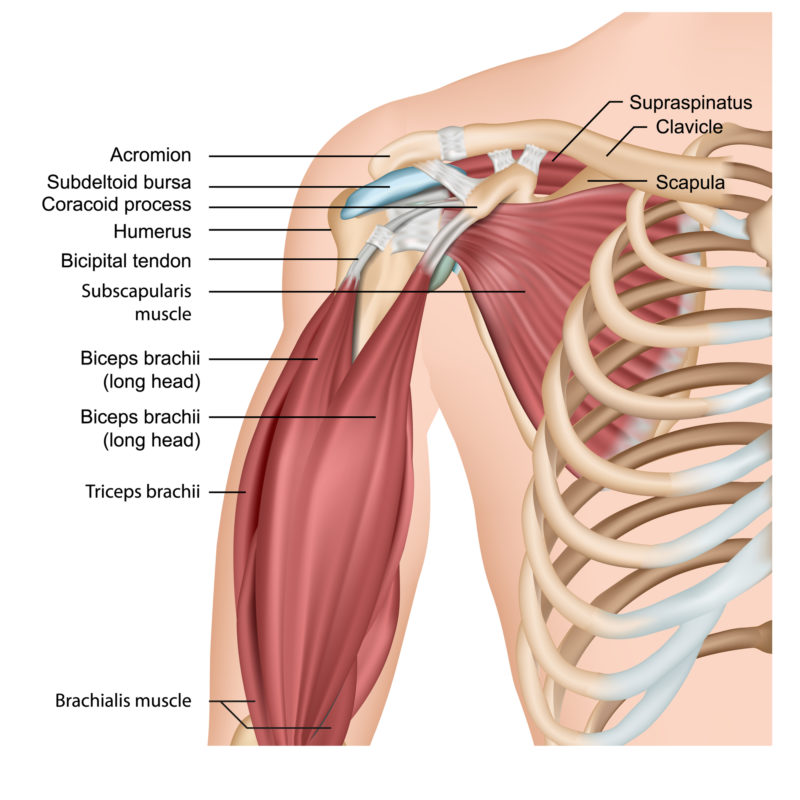Biceps Tendonitis

Biceps tendonitis is an inflammation or irritation of the upper biceps tendon, which connects the biceps muscle to the bones in the shoulder. The shoulder is a ball and socket joint made up of three bones: upper arm bone (humerus), shoulder blade (scapula), and collarbone (clavicle). The head of the upper arm bone fits into the rounded socket in the shoulder blade called the glenoid. The rotator cuff, a combination of muscles and tendons, keeps the arm centered in the shoulder socket and attaches the upper arm bone to the shoulder blade. The biceps muscle is in the front of the upper arm. It has two tendons that attach it to bones in the shoulder. The long head of the biceps tendon attaches to the top of the shoulder socket. The initial stage of biceps tendonitis occurs when the long head of the tendon becomes inflamed, red and swollen. As tendonitis develops, the tendon sheath and tendon can thicken. Damage to the tendon can result in a tendon tear, and deformity called a “Popeye” bulge in the upper arm. Symptoms of biceps tendonitis include pain, tenderness, and weakness in the front of the shoulder that moves down the upper arm, a snapping sound in the shoulder, and shoulder instability. In most cases, damage to the biceps tendon is due to a lifetime of normal activities. Degeneration worsens with overuse, repeating the same shoulder motion again and again during work, chores or sports activities. After discussing symptoms and medical history, the DOC orthopedic surgeon or PA will examine the shoulder for range of motion, strength, function of the biceps, and signs of shoulder instability. Imaging may help to confirm the diagnosis and identify other shoulder problems. Biceps tendonitis is typically treated conservatively: rest, ice, nonsteroidal anti-inflammatory medications, steroid injections, and DOC physical therapy. If biceps tendonitis does not improve with nonsurgical treatment, surgery may be an option. Post-surgery, the surgeon will prescribe a rehabilitation plan to include DOC physical therapy to restore range of motion and shoulder strength.
For more information on the cost of care, click here




